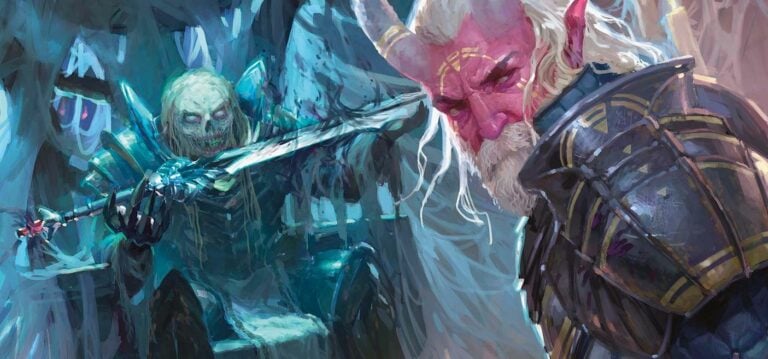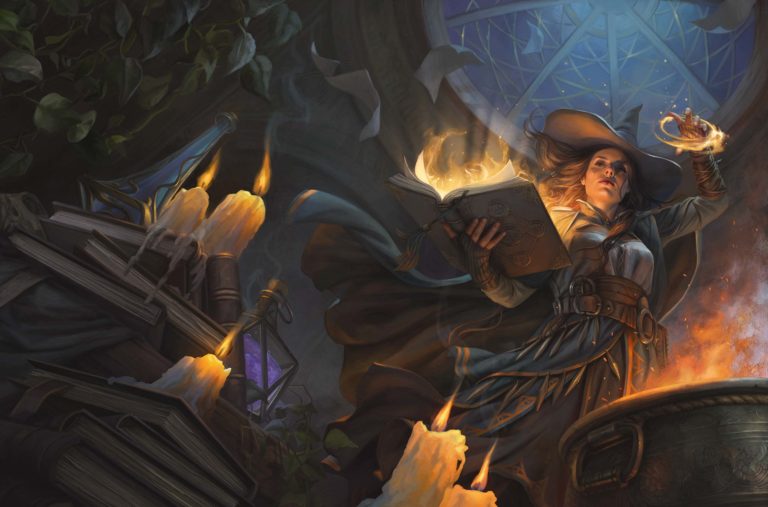Calculating Challenge Ratings in D&D | How to Calculate CR 5E
CR, or Challenge Rating, is an effective method of balancing basic 5e campaigns. The CR of traps and encounters are a sign of how difficult an encounter will be; if the CR of the encounter is below the party’s level, it should be easy mode. If it’s equal to the party’s level, then they might want to spend a resource or two. When it is above, then you’ve got an all-out brawl on your hands!
Thanks to 5e’s method of calculating attack and AC, no encounter is completely impossible for PCs. However, you might want to consider spending spells if the enemy is incredibly dangerous, or the monster has a ton of spells itself.

As players, CR can be the best way to determine how much trouble you’re in during an encounter. How do you decide how dangerous a monster is? Let’s find out!
How to Calculate CR 5e
CR is automatically input into the monster’s logs in the Monster Manual, Tome of Foes, or any other compendium you’re using. If you’re using monsters and hazards that are prebuilt, then each of them will have a solid number.
Then, you calculate the CR of an encounter by the XP values that the monsters give. There are three categories – Easy, Medium, Hard, Deadly – that a party is recommended to face. Any less than easy is too much of a cakewalk, any more than Deadly can lead to unfair party wipes.
Hazard CR is determined by “Danger” (Setback, Dangerous, Deadly) and Character level (4 ranges of 4-6 levels). Setbacks are standard traps, Dangerous traps are if you wanna knock the Barbarian unconscious, and Deadly traps are nearly guaranteed to trigger Instant Death rules. Your GM should only be using Setbacks and Dangerous traps for generic dungeoneering. Deadly traps should be reserved for obviously dangerous situations where you really should have listened to the DM.
Can Players Calculate CR?
The truth is, it’s difficult for players to calculate CR in the heat of battle… Especially if GMs are making their own monsters or changing existing ones. In most cases, if you’re fighting a single monster and it’s proving to be enough of a threat to use healing or spells, then it’s a CR equal to your level (if you’re a party of 4!). If the monster is consistently knocking you unconscious, and requiring Healing Word just to survive, then it’s likely a CR that’s nearly (but not quite) double your level. And then you add in any other monsters, and the math gets tricky!
Trap CR is a little bit easier to calculate since the DMG gives specific ranges based on effects. However, since traps can be so varied, it’s not too important to worry about the CR.
If you’re finding combat too boring or too difficult, be sure to speak up! GMs have guidelines to making fights either easier or harder whenever required.
GM Aid for CRs
If you’re a GM… don’t calculate CR by yourself. There’s a myriad of websites that do the job for you. My personal favorite is Kobold Fight Club, a website that keeps track of your daily encounter budget and can randomly generate encounters.
If you really want to calculate CR by yourself, then the DMG has a table for how much XP an encounter will have for Easy, Medium, Hard, and Deadly encounters. Typically, you want around 3 Mediums and 2 Hards per day… Or 4 Mediums and 1 Deadly. That spread will spend the player’s resources and offer a legitimate challenge!
Make sure to build for your party, as well. If you’re running a roleplaying campaign where the Fighter has 18 Charisma and 8 Strength, then it might be a good idea to change the XP values on the budget a little.
I’m serious about reserving Deadly traps for specific instances. Nothing feels worse for a PC than losing a character because they failed 2 dice rolls. Even Dangerous traps can be extremely powerful for level 1s to deal with.
Wrapping Up
CR calculation is 5e’s way of determining how much a PC can handle on any given day. It’s mostly on the GM side. But, knowing the basics about how difficult an encounter is supposed to be can help you understand the game and what 5e expects out of players.
Knowledge is power! Even if you’re not a Wizard.
Need more 5E content? See our breakdown on how to become a lich in 5E!






